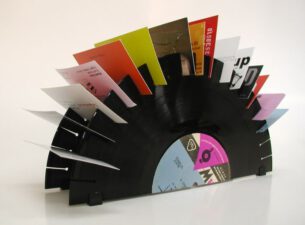Espresso machine single serving coffee pods – those fairly newfangled units of specialty grinds – let you be your own barrista. Pop one in your countertop brewing unit and in seconds have a perfect cup of coffee.
French co-workers here in Jordan turned me on to this method of coffee-making, preferring predictability and absolute freshness over the Arabic coffee boiled (and re-boiled) by a changing roster of office “coffee boys”.
Brainless convenience, what’s not to love?
Well, let’s start with those tiny single serving pods. The coffeemakers – popular models like Green Mountain’s Keurig, Melitta and Nestlé’s Nespresso – work by puncturing the pod’s aluminum top and forcing hot water through its grinds. Each pod makes one perfect cup, and one perfect piece of un-recyclable* trash.
* Most pods consist of plastic cups with aluminum lids. Even the most conservation-minded coffee drinker would be put off by the micro-recycling they require, which involves separating metal from plastic, washing out wet grounds, verifying that the plastic is in fact recyclable – then sorting components for collection.
Some manufacturers have recyclable or biodegradable pods; Nespresso’s lid and pod are fully aluminum and Canada’s Canterbury Coffee makes a version that is 92% biodegradable (everything except the nylon filter can decompose). Considering that the pod is “cooked” along with the coffee, what about health hazards?
What leaches out from the plastics and metals and nylon-based filters? Keurig states that the #7 plastic used in their “K-Cup” pods is BPA-free, but new evidence suggests that even non-BPA plastics can test positive for estrogenic activity.
These coffeemakers came online in the 1990’s and quickly moved from niche market to mainstream largely due to convenience. No need to shop for beans (pods are typically bulk mail-ordered by users), grind them, or clean filters and pots.
According to the US National Coffee Association, nearly 20% of American adults now drink single-brewed coffee every day – after traditional drip methods, it’s the most popular way to brew. That’s a lot of tiny trash accumulating in landfills; last year, Green Mountain produced 8.3 billion K-Cups. Put them in a conga line, and they’d circle the equator 10.5 times!
The single-serve craze is expanding to other food products, too. Keurig has brewing systems and pods for teas and cold drinks, and will introduce a version for soup later this year. That’s a lot of convenience, but it comes at a cost.
Americans spent $3.1 billion for coffee pods last year, compared to $6 billion for roasted coffee and $2.5 billion for instant coffee, according to a report in the Seattle Times. The New York Times reported that single-brew coffee costs over $50 a pound, while a bag of roasted beans will set you back less than $20.
Severe drought in coffee-producing nations is causing steeply rising coffee prices; Arabica coffee increased 92% in 4 months due to drought in Brazil, the world’s top coffee producer. So if concerns for the environment or for your health don’t turn you back to standard brewing, maybe the pain to your pocket will.
Image of pod coffee from Shutterstock





Great info, Jen – and kudos to Nespresso.
I admit, I bought one of their machines for my son back in the USA. Convenience factor will exponentially increase demand for these gizmos…hope consumers will press for more environmental diligence by manufacturers.
Thanks for the great comment!
Laurie – Jen is an amazing woman to meet at Tel Aviv University should you ever venture westward.
Great to bring awareness about the environmental and health hazards of single use coffee pods.
You pointed out that Nespresso’s capsules are fully recyclable but didn’t mention that Nespresso encourages customers to recycle them, and has collection points in every store to drop off used pods. No need to open them up and separate the coffee from the aluminum on your own.
They COULD be recycled, yes… but why? When you consider the energy expended in producing and packaging the pods, shipping them from overseas and recycling them, there’s still a lot of energy wasted that could be avoided by simply buying a barista-made coffee. They will never be more environmentally-friendly (or tasty) than bulk purchase of a bag of coffee beans to be made into coffee the traditional way.